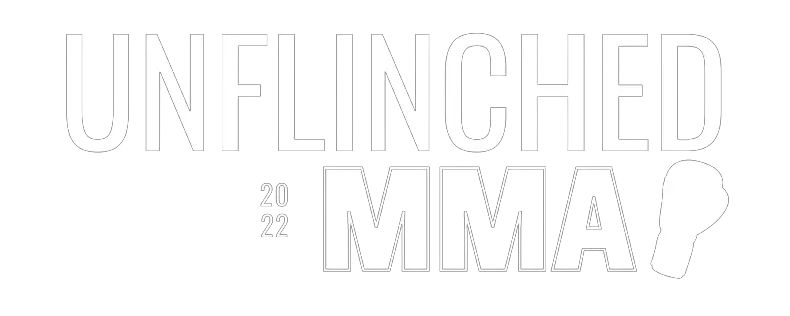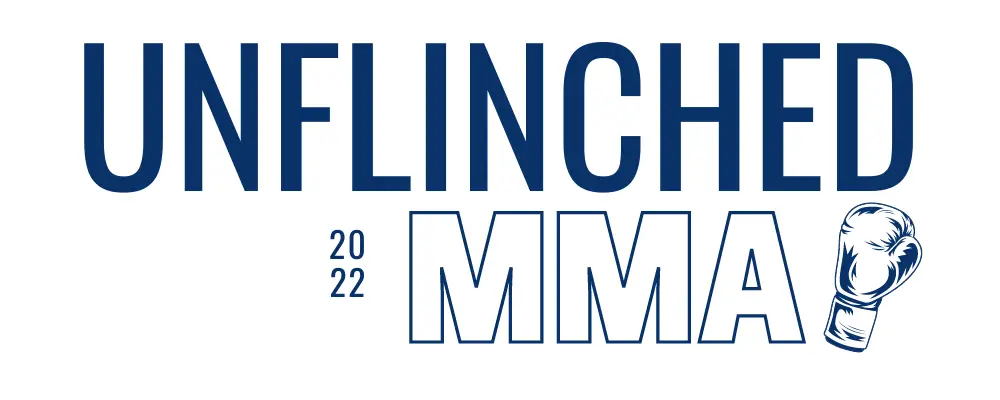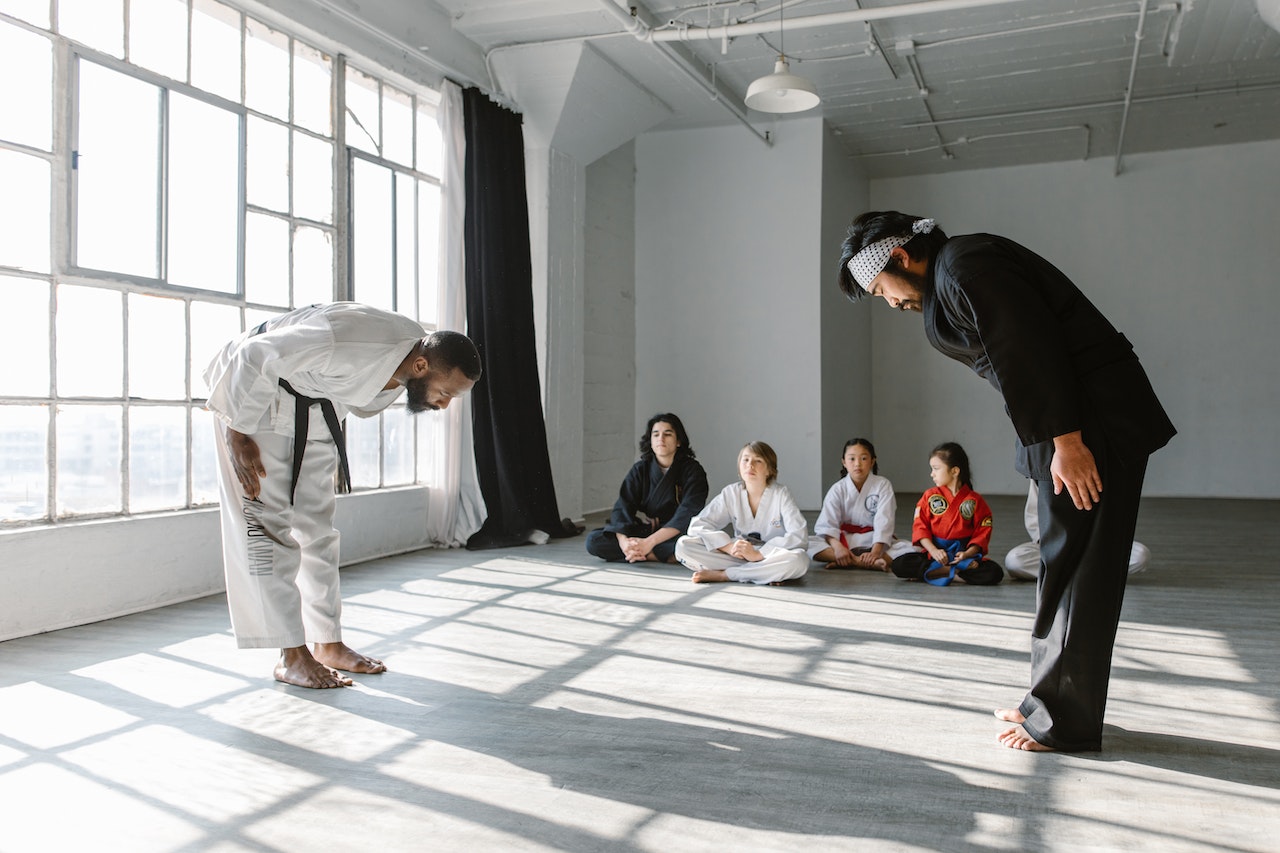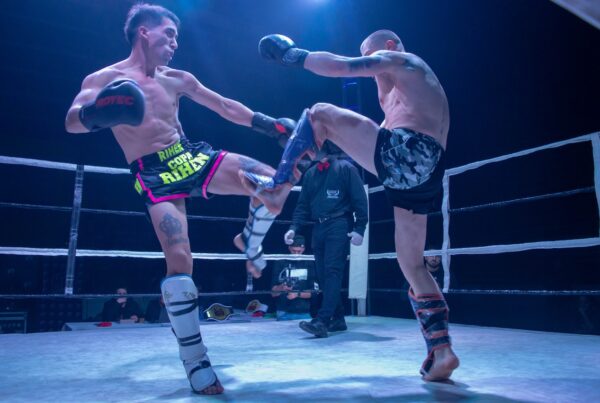Most martial arts will require you to spar and fight before getting a black belt. This includes common martial arts like Taekwondo, Karate, Krav Maga, Judo and BJJ. Only Hapkido and Aikido don’t require sparring to get black belt – but they still require at least 3-5 years of consistent training.
I provided a summary table below for you to quickly glance through the black belt requirements for your martial art and what’s required.
For more details, keep on reading. I will go over the black belt requirements for each martial art in more detail.
Table of Contents
Black Belt Requirements (Summary Table)
| Black Belt Requirement | Sparring Required | Years Required | How Hard Is It? | |
| Taekwondo | 16 years or older, a white belt rank, pass fitness, self-defense, technique and theory tests | Light sparring, Olympic style sparring and self-defense sparring | On average, 3 to 4 years | Medium difficulty |
| Hapkido | 17 years or older, master kicks, defense, meditation and attack techniques, have previous 10 degrees | No | On average, 3 years of training at least three times per week, | Medium difficulty |
| Karate | Demonstrate Kata, endurance, self-defense, board breaking skills, and pass written and oral tests | Yes | On average, 3 years | Difficult |
| Aikido | Master all of the lower rank skills and principles ( 5 KYUs on average) | No | On average, 5 years | Medium Difficulty |
| Krav Maga | Pass previous 5 levels and master military and third-party protection, advanced sparring and fighting skills | Yes | On average, 3 years | Difficult |
| Judo | Master 6 KYUs | Yes | On average, 4-6 years | Difficult |
| BJJ | 19 years old, Advanced skill level group, 1 year in previous belt | Yes | On average, 10 years | Difficult |
1. Taekwondo: Black Belt Requirement
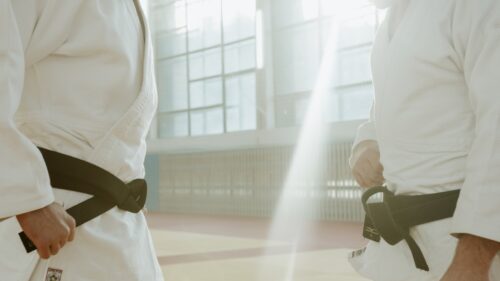
The requirements to get a black belt in taekwondo, also known as a dan rank, vary from school to school. Some schools require students to be able to do the following:
- Perform a demonstration for the black belt examiners and pass a theory test
- Complete 100 hours of supervised training
- Be at least 16 years old and be physically capable of performing all the techniques required for that rank
- Demonstrate proficiency in all previous ranks
Do You Have To Spar: Taekwondo Black Belt
You need to spar to get Taekwondo black belt. Students in taekwondo start learning to free spar at green belt after six month since they first started training for taekwondo.
This will take a few months before we’re allowed to use them will full contact sparring. Sparring is supervised closely by the instructor and all students are strongly encouraged to wear safety gear.
Years Required: Taekwondo Black Belt
Usually, it takes at least 3 to 4 years to get a black belt in taekwondo.
The more time you put in, the better your chances are of getting one. This time also varies from person to person.
Difficulty: Taekwondo Black Belt
If you’re a dedicated Taekwondo student, then you may not find it difficult to get a black belt in taekwondo. This takes into consideration the time you spend practicing, the quality of your Taekwondo school’s instructors and training, or whether you have any previous knowledge about martial arts.
2. Hapkido: Black Belt Requirement
Generally, there are five requirements for a black belt in hapkido:
- 17 years or older
- Demonstrating competence in all ten degrees that make up the art;
- Passing a written exam on the 10 areas of study;
- Passing a practical exam demonstrating self-defense techniques against attackers with weapons and multiple attackers without weapons; and
- Passing an oral test on self-defense techniques against attackers with weapons and multiple attackers without weapons.
Do You Have To Spar: Hapkido Black Belt
You don’t have to spar to get black belt in Hapkido. In fact, sparring is not very common in Hapkido. When it does occur, it usually takes place in one of two variants.
One of these is Tae Kwon Do style punching and kicking, which is good for exercise and development of range and timing. However, this isn’t really considered Hapkido – it doesn’t have much to do with real fighting.
The other variant is where the Hapkido practitioner uses their hands to control and restrain their opponent, but kicks are not used.
This is a more practical style for fighting, but it lacks variety of application. If a Hapkido practitioner wishes to compete in mixed martial arts competitions (MMA), then they would be better off using karate (or Muay Thai) as their strict sparring partner.
Years Required: Hapkido Black Belt
Some schools require only 3 years of training to achieve black belt in Hakido while others may take as long as 10 years or more.
The length of time required for achieving a black belt varies depending on the school and the individual’s dedication and discipline.
Difficulty: Hapkido Black Belt
Hapkido is relatively easy to learn, and is suitable for most ages and abilities.
You may find some schools requiring students to have a black belt in Taekwondo before learning Hapkido since Hapkido makes use of some of the techniques found in Tae Kwondo.
3. Karate: Black Belt Requirement
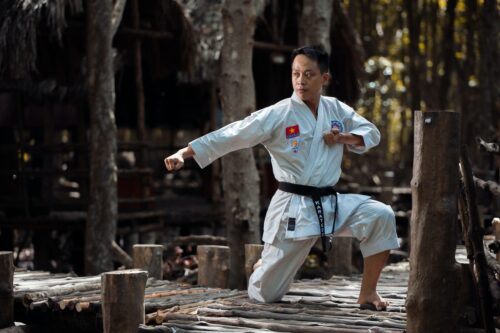
The Black Belt Test for Karate consists of 4-5 hours of both technique and dynamic drills.
The first hour of the test is an endurance challenge, including a full geared kickboxing class, pushups, situps stretching, and basic combinations.
The next part covers self defence skills. You will need to be able to perform takedowns, wrist locks and grabs in both static situations and under pressure drills. During the final hour of your test, you will have a discussion with your Black Belt Instructor followed by two rounds of breaking boards with them.
Do You Have To Spar: Karate Black Belt
You are required to spar and fight in Karate to get blackbelt.
Karate sparring can be done with a partner or on your own. It’s usually done in a controlled environment, such as a dojo with protective gear like headgear and handwraps.
It’s also important to learn how to defend yourself without using your hands, by kicking and blocking an opponent’s strikes before they reach you.
Years Required: Karate Black Belt
On average, you can get Karate black belt in 3 years. But you can also learn in less than 2 years years by completing 300 classes. You can earn your black belt by taking at least 200 classes and learning the Naihanchi fighting style which will allow you to earn.
Difficulty: Karate Black Belt
Getting black belt in Karate can be difficult. You need dedication and consistency. Some dedicated students who train every day might be able to get a black belt in less than 3 years.
Studying karate means becoming mentally strong and disciplined. This can take time to develop, so the time it takes to get a black belt will vary depending on each individual.
4. Aikido: Black Belt Requirement
Levels in Aikido progress from 6th kyu to 1st kyu. Black belt levels range from shodan (1st degree) through hachidan (8th degree). Students below 18 years of age start at yellow belt and work their way up to black belt rank, the process is supported by a number of tests.
Do You Have To Spar: Aikido Black Belt
Sparring is not necessary in Aikido because it is a martial art that primarily focuses on defense. So we don’t train what to hit, rather how not to get hit.
Years Required: Aikido Black Belt
On average, it takes around 5-6 years to get a black belt in Aikido. This assumes that you are consistently training 2-3 times per week.
Difficulty: Aikido Black Belt
If you do consistently train and work on your weaknesses, Aikido should not be too difficult.
Passing the first degree black belt test requires precision & focus while also creating freedom in your movements. That’s why training and seeking feedback are important.
In Aikido, the focus is on moving with efficiency and not just physical strength. The more time you spend in the gym to build muscle slows down your time spent practicing Aikido.
You can give yourself the mental advantage by concentrating on the following: confidence, control, good communication and understanding with the partner.
5. Krav Maga: Black Belt Requirement
To earn the black belt rank in Krav Maga, one must pass the previous 5 levels and have a deep understanding of the principles, including reality fighting tactics and concepts such as:
- Principles of self defense
- Reality fighting tactics
- Attack Prevention
- Defense against weapons
- Self Defense for Women
- Defending against multiple opponents
Do You Have To Spar: Krav Maga Black Belt
You will have to spar to get black belt in Krav Maga. When learning Krav Maga, sparring sessions are the most important part of your training.
To become proficient with any technique, you’ll need to train and spar with other experts.
Hands-on sessions can refine your ability to react and respond better in a real fight. It’s crucial that you and your partner are in agreement before practicing any new moves or they could cause injury.
If your sparring partner is a new student, we recommend using light contact and a closed guard during the first few rounds to avoid injury.
Years Required: Krav Mage Black Belt
You can typically ascend to black belt in Krav Maga within 3 years of consistent training. Most people who start at the white belt level expect to spend a lot of time focusing on their muscle memory and gross motor skills.
Difficulty: Krav Maga Black Belt.
Krav Maga is often passed off as a difficult martial art to pick up, but in reality it’s simple enough for anyone. It was designed to help people fight their opponents regardless of size or shape and can be tailored based on the individual’s needs.
6. Judo: Black Belt Requirement
Typically, a Judo student must pass the first 6 Kyus i.e White, Yellow, Orange, Green, Blue and Brown before being awarded the Black belt.
They are usually set by the instructor of the class. , or by the leadership of a martial art or weapon style. In general, they are typically divided into either physical requirements (such as proficiency in certain techniques) or maturity requirements (such as mental and emotional maturity).
Other factors may include age, experience, level of responsibility and attitude. If you’re a Judoka (Kodokan), this means you’ve learned all 67 throws. Judo typically focuses on the throws and very little on ‘ne-waza’ or grappling on the ground.
Some Judo schools DO teach grappling on the ground as well but for the most part and in sport Judo, the focus is on throws.
Do You Have To Spar: Judo Black Belt
You need to spar to get black belt in Judo. In Judo, one of the main styles of combat training is randori. This entails sparring both standing up and on the ground, with each player trying techniques from all positions.
Years Required: Judo Black Belt
Becoming a black belt in judo takes an average of 4-6 years.
But the time taken is not important. The most important thing is that someone can learn at the same pace and achieve their goal. Some people learn quicker than others, so whatever works for you!
Difficulty: Judo Black Belt
Judo is a difficult martial art to master given the variety of skills and techniques that need to be undertaken.
7. Brazilian Jiu-Jitsu: Black Belt Requirement
To become a black belt, the International Brazillian Jiu Jitsu Federation (IBJJF) requires that you be at least 19 years old and have spent at least twelve months as a brown belt.
A black belt has nine different degrees of expertise, like the dan in traditional Japanese martial arts, with ranks at the seventh and eighth degree typically denoted by coral belt. The ninth degree is represented by a thin red belt.
Do You Have To Spar: BJJ Black Belt
You will need to spar to get black belt in BJJ. Sparring, or training, is arguably what makes Jiu-Jitsu different from any other martial art on the planet.
Furthermore, it offers the opportunity for relentless growth and improvement. In other words, Jiu-Jitsu promotes constant sparring which enhances learning. If you are a beginner, the best thing to do is find a Jiu-Jitsu club close to you and train with them once or twice a week.
If you cannot find one, then it would be wise of you to find someone who can show you some basic techniques and movements on what they have learned.
Years Required: BJJ Black Belt
It’s normal to expect around 10-15 years of dedicated training before you earn your black belt in BJJ.
Brazilian Jiu Jitsu is something that takes a lot of time to do properly. So if you’re someone who is looking to train in BJJ, then your plan has to be a realistic one. You need to put in the work and time before you can expect results.
Difficulty: BJJ Black Belt
BJJ can be heard to learn because there are a lot of different techniques, positions, and submissions that take some time to get used to.
Most BJJ schools follow a progressive training program with beginners starting out by learning the basics which means things gradually become clear as you invest more time and energy in it.
What Is the Fastest Way to Get a Black Belt?
There are not shortcuts to getting a genuine black belt in any martial art. My biggest tip to get black belt fast is through consistent training and surrounding yourself with like minded practitioners.
Which is why it’s extremely important to find the right coach and training centers. If you enjoy the training, then being consistent becomes much easier.
FAQs
Q: What Is the Easiest Black Belt to Get?
It’s generally agreed that base level Taekwondo does have the quickest time to the black belt.
Tae Kwon Do students can earn their black belt in a duration of 3 years on average which is significantly faster than other forms of martial arts. This means that TKD is quick to promote its students and if you put the time in, then they’ll put the stripes on in a few months.
Q: What Is the Hardest Black Belt to Get?
The Brazilian Jiu-jitsu black belt is the most difficult belt to get out of any martial art. This is primarily because it requires live sparring or competition in order to develop skills and takes years of practices and training to perfect.
Q: What Are the Chances of Getting a Black Belt?
Globally, approximately 3-5% of martial artists end up earning black belts, Some martial arts have more difficult requirements for achieving a black belt than others. It also depends on each individual and their physical and mental fitness.
Q: What Is Higher Than a Black Belt?
Red belts, rather than black belts are higher in rank in some martial arts. In Judo, Brazilian Jiu-Jitsu, and Karate for example, red belts are given to those with a high level of expertise.

